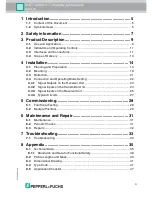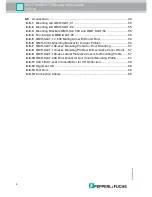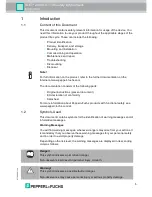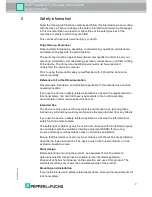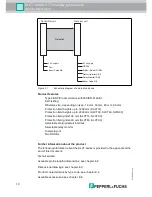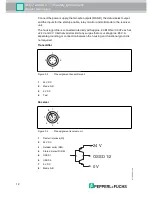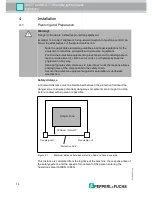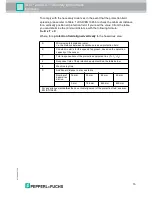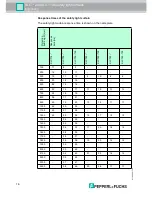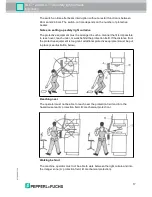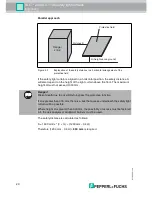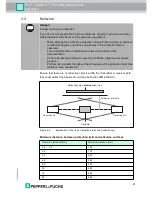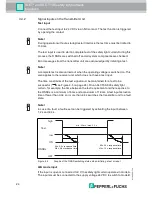
SLCT* and SLCT*/35 safety light curtains
Product Description
2
7
1
6
9
5
2
0
1
7
-1
2
9
3
Product Description
3.1
Use and Application
Product description
The SLCS safety light curtain is noncontact electro-sensitive protective equipment
(ESPE) for securing danger zones and hazardous areas.
The SLCT safety light curtain consists of a transmitter unit and receiver unit. The
protection field is formed by infrared light beams sent from the transmitter unit to
the receiver unit. The offset between the individual light beams determines the
minimum obstacle size (14 mm, 30 mm, 60 mm, or 90 mm) that can be reliably
detected in the entire protection field range.
The transmitter unit contains a certain number of transmitter diodes that emit
protective beams. The number of transmitter diodes is determined by the
protection field height and the size of the obstacle. The function mode A/B
enables the use of 2 adjacent safety light curtains.
The receiver unit detects the transmission beams, controls the two OSSD (Output
Signal Switching Devices) safety outputs and carries out tests to ensure safety.
In addition to the displays behind the front panel of the receiver unit, there is also a
PNP output, which indicates operational readiness, a dirty lens, or fault states. If
an internal fault occurs in the receiver unit, this output switches on and off at a
frequency of 5 Hz. If an external fault occurs, this output switches on and off at a
frequency of 1 Hz. If the received signal is too weak (e.g., due to a dirty lens), the
output switches on and off at a frequency of 2.5 Hz.
The test input on the transmitter unit initiates a test sequence. Activate the input by
applying 24 VDC to the input for a defined time span.
The relay monitor (RM) and restart (RI) inputs allow monitoring of the switching
elements connected externally to the OSSDs and activation of the startup/restart
interlock function.
SLCT* and SLCT*/35 safety light curtains



